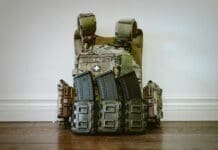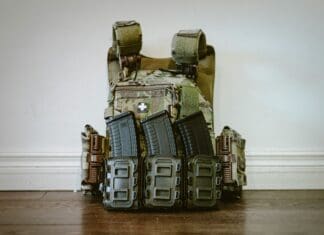This post is also available in:
 עברית (Hebrew)
עברית (Hebrew)
The United States Army has recently published a report by the Department of Defense’s Biotechnologies for Health and Human Performance Council (BHPC) relating to the military’s implications regarding the development of human augmenting technologies within the next thirty years. The report, called Cyborg Soldier 2050: Human/Machine Fusion and the Implications for the Future of the Department of Defense, summarizes the findings of a year long study regarding current and upcoming human/machine fusion technologies. The report identifies a few potential military uses for such technologies and recommends how the United States government should proceed in regards to human enhancement technologies.
The team behind the report mention four possible “cyborg” technologies that significantly enhance human performance that may be feasible to implement in soldiers by 2050 or sooner:
- Ocular enhancements to the soldiers eye. These technological enhancements may one day grant soldiers the ability to take images with their eyes. Improved eyesight, night vision, and situational awareness are also feasible technologies by 2050.
- Using an optogenetic bodysuit to restore and increase muscular control.
- Auditory enhancements that can be used to protect a soldier’s hearing from loud noises such as gunshots and explosions, as well as technologies that improve the soldier’s hearing abilities.
- Direct neural enhancements that can allow two way data transferring from one soldier’s brain directly to another, or directly to autonomous technologies.
The United States Army mentions how all these technologies offer the potential to significantly improve human performance, and the authors of the report seem optimistic towards their development within the near future.
Considering the possibility of these technologies being available to military and possibly civilian markets, the report has also mentioned 7 recommendations for the U.S. government regarding these technologies:
- The Department of Defense must conduct global assessments towards international perceptions of the cyborg technologies. It is likely that adversaries of the United States may be more willing to adopt such technologies than Americans due to ethical concerns.
- U.S. leadership should discuss the impacts of the technology with allied partners. This will help develop policies that will align cyborg technologies with U.S. allies.
- The U.S. should invest in developing forward leaning policy that protect individual privacy, security, and forward leaning risk. Furthermore, the Department of Defense should invest in dynamic legal, security, and ethical frameworks.
- The U.S. should undertake to reverse negative cultural narrative of cyborg technologies across a wide range of media outlets. This is to minimize a distorted and dystopian narrative of technology. An effort should be made to increase government transparency towards the implementation of the technology.
- The U.S. military should conduct wargames in order to assess the tactics and doctrine of allied and enemy forces in regards to human enhancement technologies.
- The U.S. government should make an effort to coordinate the development of the technologies alongside the commercial industry. This will lead towards a more efficient and faster development of human enhancement technologies.
- The U.S. should support research that can validate the long run safety of cyborg technologies and make sure that there are no major negative impact on the quality of life for the technology’s operator.

























